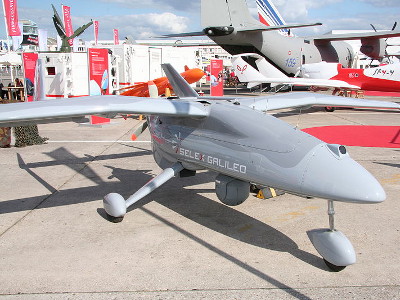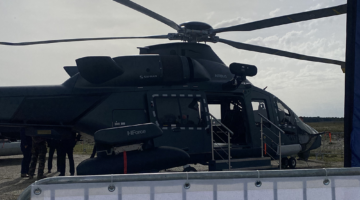Photo credit © DefenceWeb
The head of United Nations peace-keeping operations Herve Ladsous says the organization will soon deploy unarmed Medium Altitude Long Endurance (MALE) surveillance drones to help the peacekeeping mission in Mali.
Ladsous revealed the details of the surveillance program in a briefing to the UN Security Council on Wednesday: “I take this opportunity to signal to the (Security) Council our intention to deploy unmanned aerial systems in order to enhance the situational awareness of MINUSMA as well as its ability to protect civilians and its own personnel,” he said.
He did not specific the type, numbers and possible deployment date for the UAVs being sought for operations.
A pre-solicitation notice seeking contractors for the Mali UAV program posted on the UN Procurement Division website on April 28 revealed that ‘multiple’ drones will be operated from bases in Gao and Timbuktu.
“The UN-PD is seeking Expressions of Interest (EOI) for the provision of Unmanned Aerial Systems (UASs) with multiple Unmanned Aerial Vehicles (UAVs) in support of peace-keeping operations in Mali with the basing of one system at Timbuktu and (the other in) Gao. The UAS provider will be an independent contractor who remains in control of the system and aircraft and shall be responsible for operation and maintenance of the aircraft.
“The flight operating crew and all maintenance personnel shall at all times remain the servant or agent of the contractor. All staff and equipment necessary for the operation of the aircraft are expected to be self-sufficient for all technical and subsistence requirements, although in some locations, accommodation and meals may be provided within UN compound for security of personnel or lack of alternative. The staff of the independent contractor will operate closely with UN aviation and military personnel and interact with the host nation as and when required,” the solicitation reads.
Further, the contractor will be required to provide staff to track, control, monitor the UAS and provide analysis of data received working closely with UN mission contacts. The required UAVs must have an endurance of 12-18 hours and be able to operate at an altitude of 10 000 feet while sending back real-time camera/infrared video and synthetic aperture radar imagery via line-of-sight communications.
“While the initial deployment of UAS is expected to be based on a particular UN Mission, future deployment could be in any peacekeeping mission. It is expected that contracts will be for a period of 3 years, extendable at the option of the UN to 4 and 5 years and will generally apply to a single mission area. UAV capability should provide long endurance and be able to fly long range missions to a point of interest, loiter on patrol and return to base,” the notice stated.
The deployment of UAVs to Malian operations follows their success in support of the military operations of the UN peacekeeping force in the Democratic Republic of Congo (DRC).
Selex ES Falco UAVs have been deployed there.
Ladsous has already indicated that he would like to deploy UAVs in support of other African peacekeeping missions in Darfur, the Central African Republic (CAR) and South Sudan.
Malian Foreign Minister Abdoulaye Diop said his government has already approved the UN operation of unarmed drones and hopes they will be deployed as soon as possible. The government is grappling with a national security crisis in which the weak army is battling a resurgent Tuareg separatist rebellion and a host of armed Islamist groups with links to Al Qaeda in the Islamic Maghreb.
The security situation has deteriorated remarkably in the past few months, leading to increased armed attacks and massacres of civilians inside and outside refugee camps, foreign aid workers and UN personnel. In a report analysing the performance of the five Selex UAVs which were deployed to the eastern DRC in December last year, UN Secretary General Ban Ki Moon said the drones have proved useful.
“Since their operationalization, the unmanned aerial systems have provided MONUSCO with a responsive, controlled, and timely source of information, particularly in terms of supplementing the force’s intelligence, surveillance, and reconnaissance efforts against the illegal activities of armed groups,” he said.
Republished with permission of our strategic partner defenceWeb












